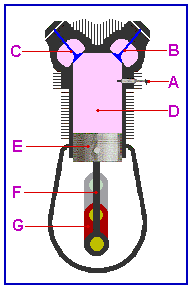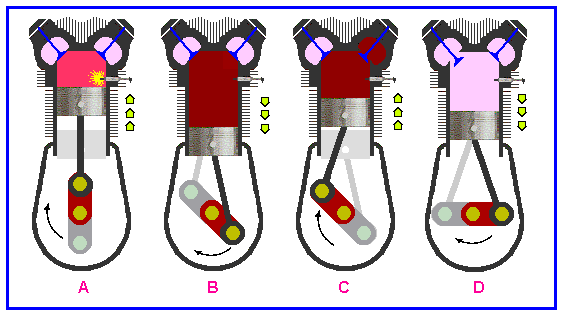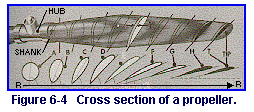 |
|||||
| Home | Research | For Teachers | HISTORY Level 1 Level 2 Level 3 |
PRINCIPLES Level 1 Level 2 Level 3 |
CAREER Level 1 Level 2 Level 3 |
| Gallery | Hot Links | What's New! | |||
| Web Administration and Tools | |||||
 |
|||||
| Home | Research | For Teachers | HISTORY Level 1 Level 2 Level 3 |
PRINCIPLES Level 1 Level 2 Level 3 |
CAREER Level 1 Level 2 Level 3 |
| Gallery | Hot Links | What's New! | |||
| Web Administration and Tools | |||||
![]()
Thank you,
Choose the BEST answer from the options.
1. Energy is the capacity to do work.
2. If energy is not doing work, it is called potential energy.
3. Kinetic energy is energy causing movement.
4. Boyle's law states that when the pressure on a gas is increased, the volume will be decreased.
5. If the piston in an engine moves such that the volume of the confined gas is doubled, the pressure of the gas will be reduced.
6. If the piston in an engine moves such that the pressure in the cylinder is increased, the temperature of the gas in the cylinder will increase.
7. Identify these parts of a reciprocating engine by choosing their names opposite the letter in the figure to the right.
| Answer: |  |
|
| A. | Spark plug | |
| B. | Exhaust valve | |
| C. | Intake fuel valve | |
| D. | Cylinder | |
| E. | Piston | |
| F. | Connecting rod | |
| G. | Crankshaft |
Use the following figure for question 8 - 12:

Choose the BEST answer from the options.
8. Which is the intake stroke? D.
9. Which diagram should be colored red to show combustion? B.
10. Place the above strokes in correct sequence.
A. D. B. A. C. B. D. C.
11. Which stroke shows the exhaust is burned fuel? C.
12. In which strokes would Boyle's and Charles' laws be working in reverse?
(Volume larger, pressure lower) D. & B.

13. A propeller that can change its pitch automatically to suit the needs of the engine is called a constant-speed propeller.
14. A propeller creates lift because, like a wing, it is shaped like an airfoil.
15. Feathering a propeller causes it to stop windmilling.
Place the letter of the option that BEST completes the statement.
16. The type of jet engine that must be moving through the air before it can be started is a ramjet
17. In a turbofan engine, most of the air entering the engine does not pass through the compressor.
18. The turbine drives a propeller in a turboprop engine.
19. In a turbine engine, the air and fuel are mixed together in the combustion chamber.
20. In a turboprop engine, the speed of the propeller is slowed down by the reduction gears.
21. The major advantage a turbofan engine has over a turbojet engine is that it can operate more efficiently at low altitudes and low speeds.
22. The compressor blades in a jet engine are turned by the hot exhaust gases turning the turbine.
Send all comments to ![]() aeromaster@eng.fiu.edu
aeromaster@eng.fiu.edu
© 1995-98 ALLSTAR Network. All rights reserved worldwide.
Updated: March 01, 1999